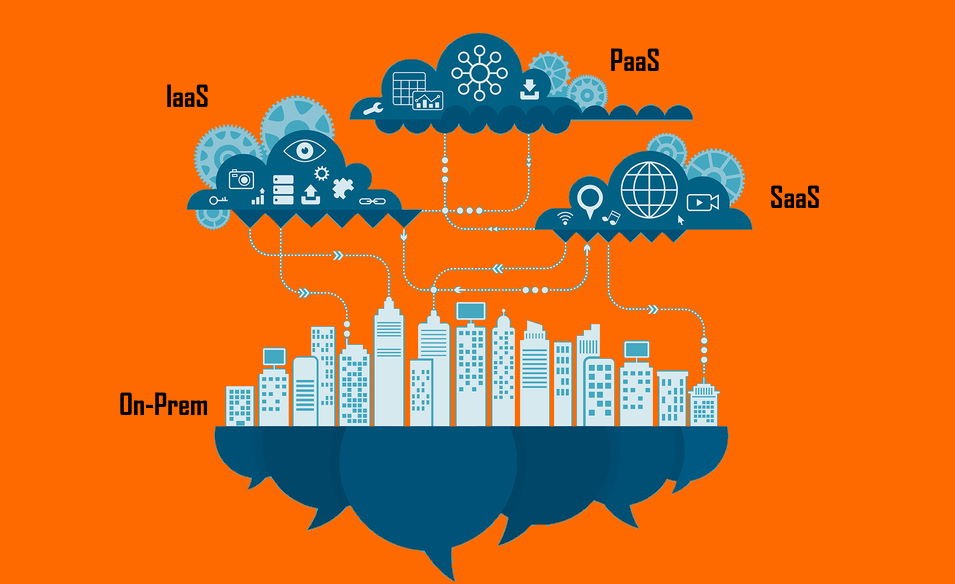

In today’s high tech world we are all inundated with acronyms but in the new world of cloud technologies so many of the acronyms sound the same. We have covered PaaS, IaaS, SaaS in several other articles in the past but this one is designed for non-techs.
This is part one of our two part plain english series on the Evolution of Computing. Part two explains the difference between on-prem, Virtual Machines, Containers and something very new named Functions.
In the 1990’s there was only one kind of computer, yours. That is on-prem (aka. on-premise). Companies often had tens to thousands of physical computers in their on-prem server rooms.
By the late 2000’s software and applications that ran on a website were introduced. Users do not have to install anything (or not very much) and they typically”pay as they go”. Users / Companies do not buy or manage the computer hardware. This “As A Service” model which has many derivatives that confuse people. We are going to cover PaaS, IaaS, SaaS, but the core idea is that users / companies do not buy, manage, maintain, cool, heat, provide security, or rent space for computer hardware, they just connect to it on demand.
SaaS is the most common and easiest to understand “As A Service” offering. Almost everyone uses SaaS even if they don’t understand they are. If you are using your internet browser to connect to software, you are using SaaS. Some common examples of SaaS are Microsoft 365 (formerly Office 365), Salesforce, and even GMail and Yahoo Mail.
Platform As A Service (aka PaaS) is mostly used by developers and not end users. It is a tool set that runs in the cloud (i.e. an Microsoft, Google , or Amazon data center) that developers connect to using a browser and often other tools (like Microsoft PowerShell and AWS CLI) to access the tools to make or manage software.
Infrastructure As A Service (aka IaaS) simply allows administrators (like me!) to connect to a full computer running at some other companies datacenter. It is not often used by end users. With IaaS, the company does not pay for the hardware, rent or manage the physical space that the hardware is in, they just connect to it often using Remote Desktop or command line tools like Microsoft PowerShell and AWS CLI). Microsoft Azure, Amazon Web Services (AWS) and Oracle Cloud are three popular examples of IaaS.
| Model | User | Access |
| On-Prem | Everyone | Everything |
| SaaS | Everyone | Just an Application In the Cloud |
| PaaS | Developers | Development Tools In the Cloud |
| IaaS | IT Pros | Whole Machines In the Cloud |
| On-Premise | Infrastructure as a Service | Platform as a Service | Software as a Service |
| Applications | Applications | Applications | Applications |
| Data | Data | Data | Data |
| Runtime | Runtime | Runtime | Runtime |
| Middleware | Middleware | Middleware | Middleware |
| os | os | os | os |
| Virtualization | Virtualization | Virtualization | Virtualization |
| Servers | Servers | Servers | Servers |
| Storage | Storage | Storage | Storage |
| Networking | Networking | Networking | Networking |
Responsibility: Customer (i.e. you!) Cloud Service Provider (CSP)
This website uses cookies.
View Comments